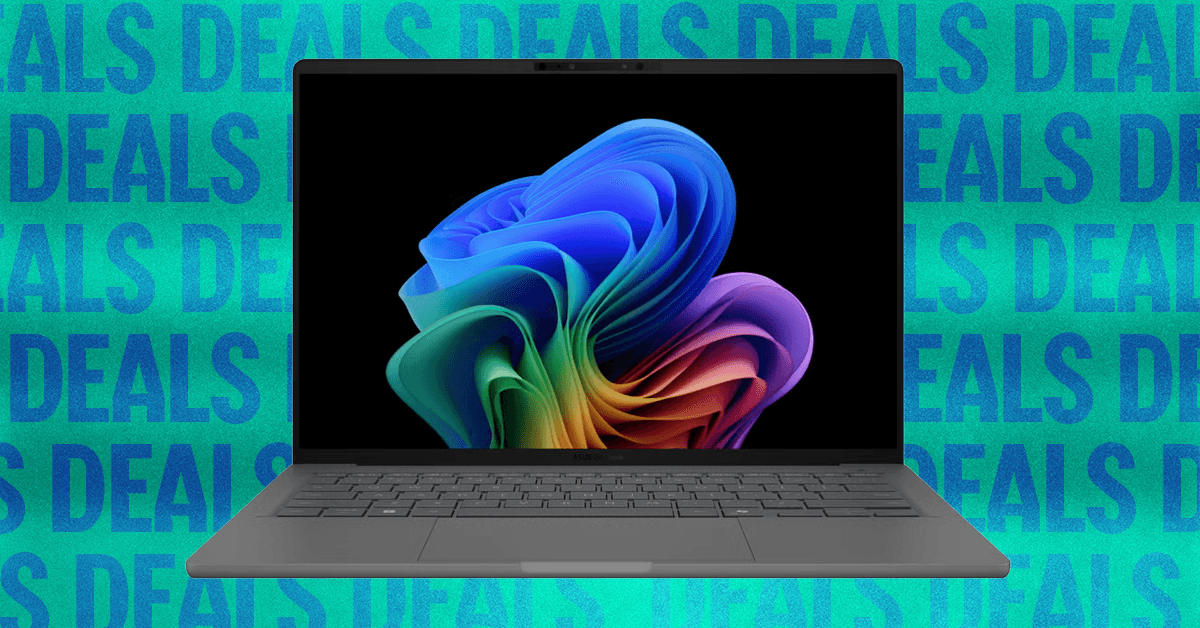Tech
The Vision Pro Was An Expensive Misstep. Now Apple Has to Catch Up With Smart Glasses

When discussing the development of AR and AR devices back in 2016, he said that most people wouldn’t find it acceptable to be “enclosed in something … because we are sociable people at heart.” He was spot on.
It turns out that what people really want at this moment is to just wear something that looks good and feels like a normal pair of glasses, with use cases that are actually, well, useful. And no, Tim, that’s not to watch Ted Lasso on their ceiling.
Coming to smart glasses in 2027 will feel almost impossibly late for a market that is taking off now, and while Apple is no stranger to starting behind, it will need to ensure its judgment on what its customers want in smart glasses is much more attuned than it was with Apple Vision Pro. At this point, it simply can’t afford another misstep.
But Apple isn’t giving up on Apple Vision Pro either, and reports suggest it may well revisit it once the more pressing issue of smart glasses is dealt with. While Gartenberg remains unconvinced that Apple can get the Vision Pro cheap enough to make it truly accessible for all (“the things that Apple would need to do to get this thing down to a price for humans is extraordinary”), Sag suggests it might not have to.
He points to the boom in gaming consoles as an example. Rather than flatlining the gaming PC market as was predicted, the proliferation of consoles actually helped drive sales of PCs, with more people getting into gaming, so more wanting to level up their equipment in time. He predicts the same trend will happen with smart glasses. People will start with more basic, familiar frames, then migrate into the chunkier, fully featured versions.
“People need to remember that XR is a spectrum and that devices are going to exist along that continuum,” Sag says. “The cheaper, simpler devices are going to reach the most people, but then there’s going to be a lot of people who want more than this base level experience.”
One day, Apple may be able to make that singular, gorgeous XR headset that people actually want to wear. But until then, it has to meet the market where it is headed—and that is in cheaper, lighter, more functional frames.
Tech
This Lightweight Laptop Is Almost Half Off

On the hunt for a lightweight and budget-friendly laptop that won’t let you down? Best Buy has the Asus Zenbook A14 discounted from its usual $1,000 price point to just $550 for an early Black Friday deal. This featherweight laptop is a Windows Copilot+ PC, with a Qualcomm Snapdragon X Plus at its core, and is a great deal for students or occasionally putting in some hours from your local café.
Weighing in at just 2.1 pounds, this Zenbook is one of the lightest laptops we’ve tested to date, with most machines starting closer to 2.4, and only Lenovo’s Thinkpad X1 Carbon coming anywhere close at 2.2 pounds. That’s largely thanks to a material developed by Asus called Ceraluminum, a combination of ceramic and aluminum that’s both extremely light and very durable.
Like a lot of laptops in the Copilot+ range, the Zenbook sports an FHD+ (1920 x 1200) resolution screen, but it’s at least an OLED panel, which is great news for those of you who put your laptop on the coffee table to watch movies. Our reviewer Christopher Null ran a video playback test, and even with the screen at full brightness, the laptop managed to run for over 20 hours. That’s a truly impressive feat, particularly for a laptop so thin and light.
The heart of this machine is a Snapdragon X Plus from Qualcomm, a brand you might be more used to seeing in mobile phones than Windows machines. While it does help give you that awesome battery life, the performance leaves a bit to be desired. While it’s totally fine for web browsing, text documents, and email, don’t expect to play the latest games, or do anything more strenuous than some light graphics work.
Qualcomm chips are slowly becoming a more appealing option for laptops, and if you’re trying not to spend a ton of money on a laptop, they’re worth a look. While gamers and video editors should swing by our laptop roundup for more serious options, at just $550 the Zenbook A14 offers a surprising amount of value in a petite package.
Tech
Best Travel Pants for Women Who Go Places (2025)

Travel pants that are tough enough to handle hangry moods and unplanned delays.
Source link
Tech
5G Standalone growth spurs differentiated connectivity services | Computer Weekly

One of the key trends of 2025 has been the continued growth of 5G Standalone (5G SA) networks, and this growth has been confirmed by the November 2025 Ericsson mobility report (EMR), which found that deployments have triggered a notable 2025 growth in the number of communications service providers (CSPs) offering differentiated connectivity commercial models based on 5G SA network slicing.
The November 2025 EMR covers a new forecast timeframe, from 2025 through the end of 2031. EMR researchers identified 118 cases – across 56 CSPs – where network slicing is used to provide differentiated connectivity services. Out of these 118 cases, 65 have moved beyond proof of concept and into commercial services across 33 CSPs. These are either subscription services or add-on packages for consumer or enterprise customers. Twenty-one of the 65 commercial offerings – almost one third – were launched during 2025 alone.
In addition, the study found that more than 90 CSPs have now launched/soft-launched 5G Standalone (5G SA) networks – an increase of about 30 CSPs from the same period last year, and 20 from the June 2025 EMR report. It added that in 2025 alone, 5G subscriptions are expected to top 2.9 billion by the end of the year – equating to around one-third of all current mobile subscriptions – an increase of some 600 million subscriptions year on year.
In geographical coverage terms, 2025 saw an increase of 400 million people worldwide being able to access 5G. Around half of the global population beyond mainland China is expected to have 5G coverage by the end of 2025.
Mobile network data traffic grew 20% between the third quarter of 2024 and the corresponding period in 2025, which Ericsson said was a slightly larger-than-expected increase, driven by mainland China and India. Continued growth is forecast at an annual average of 16% through 2031. 5G networks are expected to manage 43% of all mobile data by the close of 2025, up from 34 % for the corresponding period last year. EMR experts forecast this to increase to 83% in 2031.
Looking at 5G use cases, the survey predicted enhanced mobile broadband to top 6.4 billion 5G subscriptions by the end of 2031, comprising around two-thirds of all mobile subscriptions at the time. Some 4.1 billion of these subscriptions – around 65% – are forecast to be 5G SA.
Fixed Wireless Access (FWA) broadband was also seen as continuing to grow as a 5G use case. The November 2025 EMR forecasts that around 1.4 billion people globally are expected to access FWA broadband by the end of 2031 – 90% via 5G. EMR researchers have identified 159 providers that currently offer FWA services via 5G – amounting to approximately 65% of all FWA service providers.
The survey also found that the number of service providers offering speed-based tariffs – a common monetisation model for fixed broadband via fibre or cable – increased from 43% to 54% since the November 2024 EMR.
Commenting on the research and its findings regarding 5G, EMR publisher and Ericsson CTO Erik Ekudden said: “We see that service providers around the world are keen to embrace and deploy 5G SA to offer differentiated connectivity based on value services and not just data volume packages. As reflected in the case studies in this EMR edition, 5G SA is already enabling differentiated connectivity opportunities. We’ve seen many service providers go from proof-of-concept to commercial deployment in 2025 alone, and we expect to see that trend continuing.”
The new reporting EMR period also covered the first expected deployments of commercial 6G. Based on previous mobile generation cycles’ subscriptions uptake, EMR researchers expect the first commercial launches to be driven by leading service providers in front-runner markets, such as the US Japan, South Korea, China, India and some Gulf Cooperation Council countries.
Global 6G subscriptions are forecast to reach 180 million by the end of 2031, not including the early uptake of AI-enabled internet of yhings devices. Ericsson believes that the subscription uptake number could increase significantly if 6G launches earlier than previous cycles indicate. Commercial 6G is expected to launch about a year later in Europe, compared with other countries, than was the case for 5G, primarily due comparably later deployments of 5G SA.
-

 Tech5 days ago
Tech5 days agoNew carbon capture method uses water and pressure to remove CO₂ from emissions at half current costs
-

 Politics7 days ago
Politics7 days agoBritish-Pakistani honoured for transforming UK halal meat industry
-

 Sports5 days ago
Sports5 days agoTexas A&M officer scolds South Carolina wide receiver after touchdown; department speaks out
-

 Business5 days ago
Business5 days agoThese 9 Common Money Mistakes Are Eating Your Income
-

 Sports6 days ago
Sports6 days agoApple scrapping MLS Season Pass service in ’26
-

 Business6 days ago
Business6 days agoWhat’s behind Rachel Reeves’s hokey cokey on income tax rises?
-

 Fashion6 days ago
Fashion6 days agoAfter London, Leeds and Newcastle, next stop Glasgow for busy Omnes
-

 Tech7 days ago
Tech7 days ago$25 Off Exclusive Blue Apron Coupon for November 2025


















